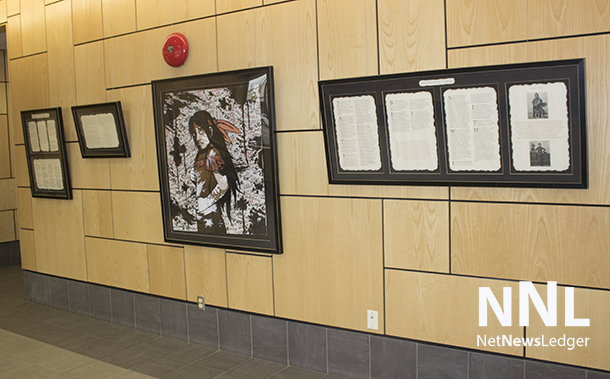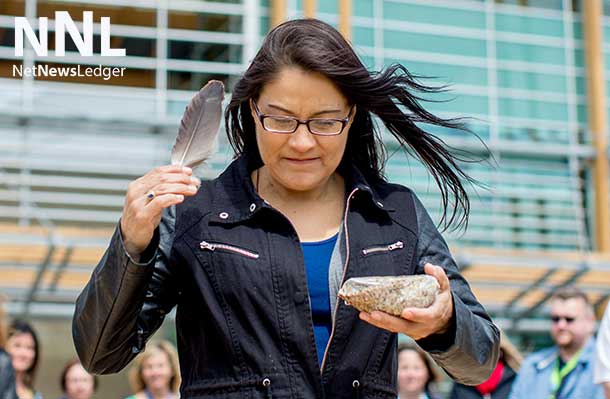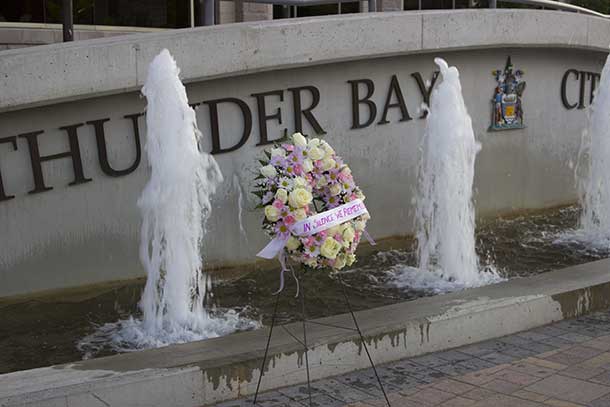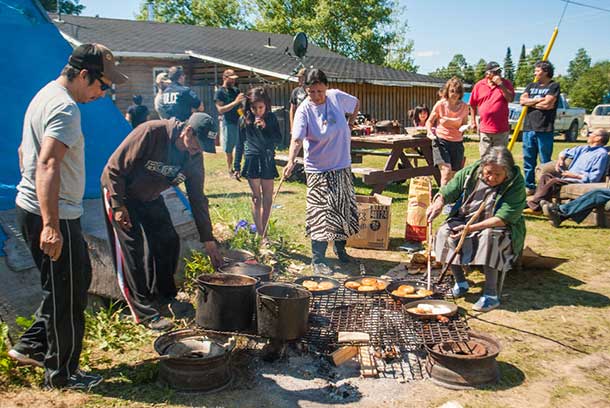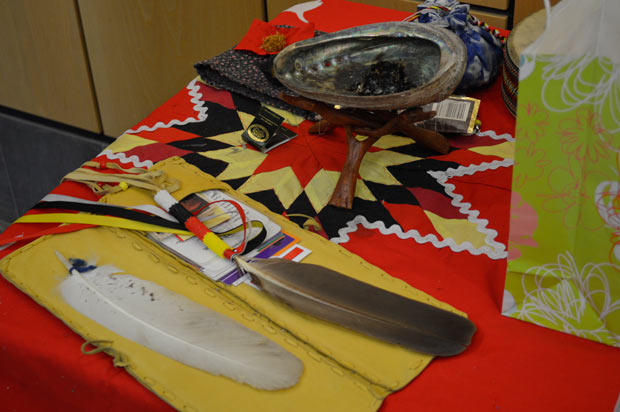

THUNDER BAY – Beverly (who does much of the research for these articles) and I were recently in Washington, DC and we made a point of visiting the National Museum of the American Indian. The design consultants for this impressive building included Douglas Cardinal the Canadian architect who designed the Canadian Museum of History in Ottawa, His Blackfoot heritage is superbly represented in the flowing, wind-like curvilinear lines of this Smithsonian museum. Being in this city of eternal gridlock, a renowned centre of excellence in political spin my preconceptions in entering the building were preparing me for a “white-wash” – so to speak. I was as surprised as I was disturbed by what I encountered there and how wrong my stereotype turned out to be.
Through audio-visual presentations, story-boards and tableaux, the museum contains a stunning representation of the cultures and contributions of the first inhabitants of the Americas. But, as a reminder of what once was and in many respects still is, one of the floors in this massive museum was devoted exclusively to the sad and sorry history between American Indian nations and the US government – the broken promises and treaties, the forced re-locations, the massacres, the deliberate – some would say genocidal – policies bent on “civilizing the savage,” (Does any of this sound familiar?). In short the systemic racism that had so long been a hallmark of North American Indian or Aboriginal policy.
Perhaps the most symbolic representation of this sensory overload of sadness was a copy of a poster published and distributed in the early 1900s stating “Indian Land For Sale – Cheap”
As we left the museum and strolled through the Washington Mall with its magnificent public architecture, our collective experience in the museum was enough for a three-hour discussion as to the most effective way to combat racists in Thunder Bay or anywhere else racism raises its repugnant head. This remains as current and prevalent a topic today as it has been throughout the last two centuries.
The Oxford dictionary of record suggested a good point of departure for our exchange: Racism is “prejudice, discrimination, or antagonism directed against someone of a different race based on the belief that one’s own race is superior.” So what is the most effective way to deal with racists? Now there are many reasons why I love my wife foremost among them her compassion for all life, her boundless patience and her innate optimism about an individual’s ability to learn. Bev has worked as a professional educator at the post-secondary level for all of her career. She has created, organized and presented numerous cross-cultural education and awareness workshops, the intent of which has been to sensitize “mainstream’ Canadians to the cultures of and challenges facing Canada’s first peoples. While her patience has sometimes worn thin her fundamental belief is education will open eyes and hearts and create better understanding, thereby reducing racist beliefs and actions. This approach, she argued, also has the possibility of creating allies in the fight! My retort was instantaneous suggesting that racists beliefs are “inherited” and too many simply don’t want to learn. Bev persisted. “If you start early enough – at the primary school level, kids will eventually challenge the stereotypes foisted upon them, even by their uninformed parents. When knowledge can inform beliefs, hope springs eternal!”
I realized as the discussion continued that I have a substantially different approach. Essentially it boils down to going after racists tooth and claw. When someone spews racists comments I deliberately and with malice aforethought smack ‘em down (figuratively of course, although the alternative is tempting) exposing their ignorance and ridiculing their assumed superiority. Believing that very old dogs, like very old beliefs among adults can rarely be taught new tricks, a tactic of measured humiliation will, at the very least, make them think twice about the appropriateness of further divulging their wilful ignorance. Let them fester in solitude.
The aura of reverence surrounding the Lincoln memorial concluded our discussion – both of us lost in our different reflections on this great man, slavery, the war that ended most of it and the Cherokee ‘Trail of Tears’ brutally enforced by one of his predecessors in office.
I can see and concede Bev’s point. Education – lighting a candle so that it will shine in the dark is the nobler route. I just find it so much more emotionally fulfilling to curse the darkness.
Beverly Sabourin, recently retired as the Vice-Provost of Aboriginal Initiatives at Lakehead University, is a member of the Pic Mobert Ojibwe. Peter Globensky is a former senior policy advisor on Aboriginal Affairs in the Office of the Prime Minister and recently retired as CEO of the Canadian Council of Ministers of the Environment.

